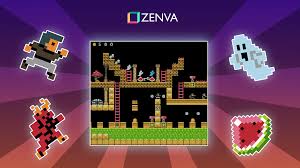
When it comes to creating visually stunning and immersive game worlds, designing with negative space is a crucial element that often gets overlooked. Negative space, also known as white space, is the area around and between the subject of an image. In the world of game design, this concept can be used to create a more dynamic and engaging gaming experience for players.
One of the key benefits of incorporating negative space in game world design is the ability to guide the player’s eye and focus. By strategically using empty areas in the game environment, game developers can draw attention to important elements such as character interactions, items, or key locations. This not only helps players navigate through the world more easily but also enhances the overall storytelling and atmosphere of the game.
Moreover, negative space best minecraft java server hosting can be utilized to create a sense of balance and harmony in a game world. By carefully arranging the elements within the game environment and leaving empty spaces in between, game designers can achieve a visually pleasing composition that is both aesthetically appealing and functional. This balance of positive and negative space can also help create a sense of depth and dimension in the game world, making it feel more realistic and immersive for players.

In addition to improving visual appeal and navigation, negative space can also enhance the emotional impact of a game world. By creating areas of emptiness or solitude, game developers can evoke feelings of suspense, mystery, and tension in players. For example, a vast empty expanse in a survival horror game can heighten the sense of isolation and dread, while a serene open field in a fantasy game can convey a sense of tranquility and peace.
From a technical standpoint, designing with negative space can also have practical benefits for game performance and optimization. By carefully managing the amount of visual information displayed on screen, game developers can reduce clutter and improve the overall efficiency of rendering in the game. This can lead to smoother gameplay experience, faster loading times, and better frame rates for players.
In conclusion, designing with negative space in game worlds is a powerful tool that can elevate the visual appeal, storytelling, and emotional resonance of a game. By strategically incorporating empty areas in the game environment, developers can create a more dynamic and engaging experience for players while also improving technical performance. So next time you set out to create a game world, don’t forget to embrace the power of negative space and see how it can transform your gaming experience.

